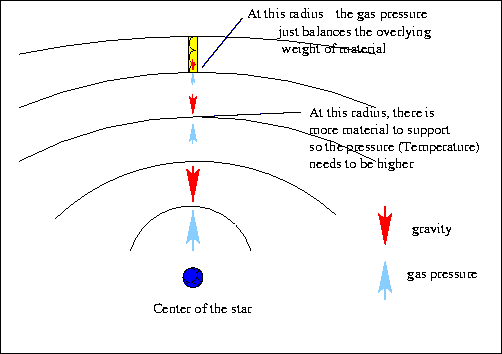It's all based on the concept of
HYDROSTATIC EQUILIBRIUM
- the downward force due to gravity (i.e the weight) of the gas must be
balanced by the upward thermal pressure of the gas.
If these forces were not equal, the star would be collapsing inward
or expanding outward.

The pressure exerted by a gas increases as the temperature of the
gas increases. If you think about a container filled with gas atoms
or molecules, the thermal pressure exerted on the walls of the
container is due to all the atoms and molecules bouncing off the
walls. Remember, temperature is a measure of the mean kinetic energy of
the gas particles.

At each level moving down towards the center of the Sun, the
total column of mass above every point increases, so the Gravitational
Pressure increases as you move in from the surface of the Sun. To
maintain Hydrostatic Equilibrium, the Thermal Pressure must also
increase with depth which requires that the temperature increase
toward the center of the Sun.
With computers it is possible to build (we think) very
accurate models of the Sun and other stars based on the
the requirement of hydrostatic equilibrium and the laws
of chemistry and physics. We can predict the temperature
and density of the Sun at each radius from the center to the surface.

You can see that the temperature at the center of the sun
(T = 1.5 x 107 K) is much greater than the temperature at the
surface of the sun (T = 5800K). The central temperature of the sun
is definitely high enough for nuclear fusion to take place there.
Actually the temperature is high enough that fusion can take place
in the inner 10% of the sun.
 107 K
107 K


